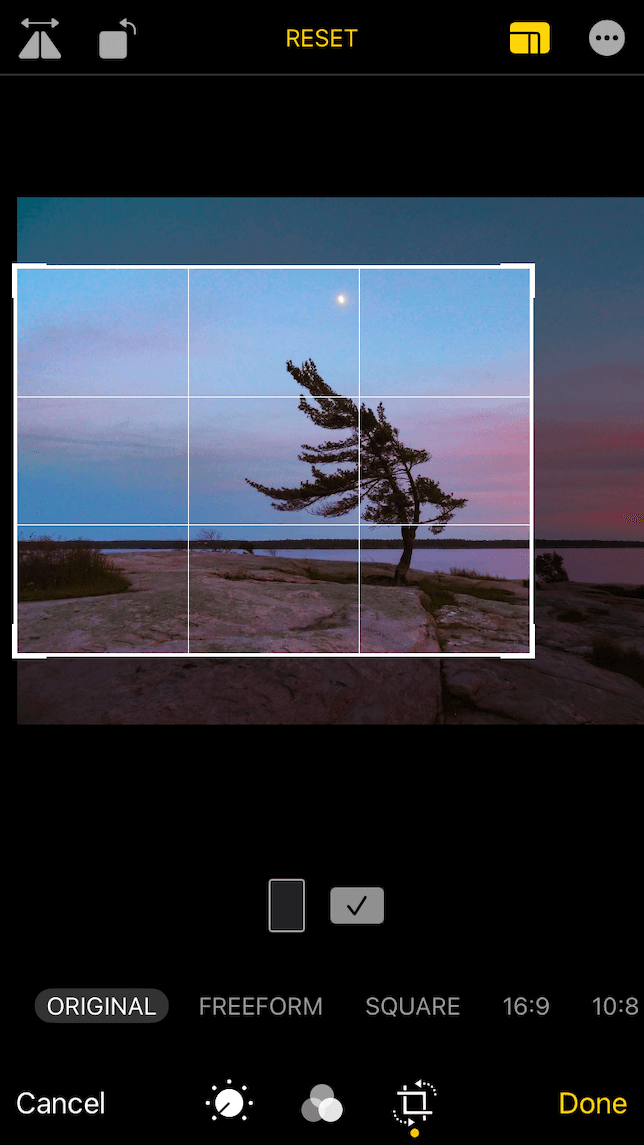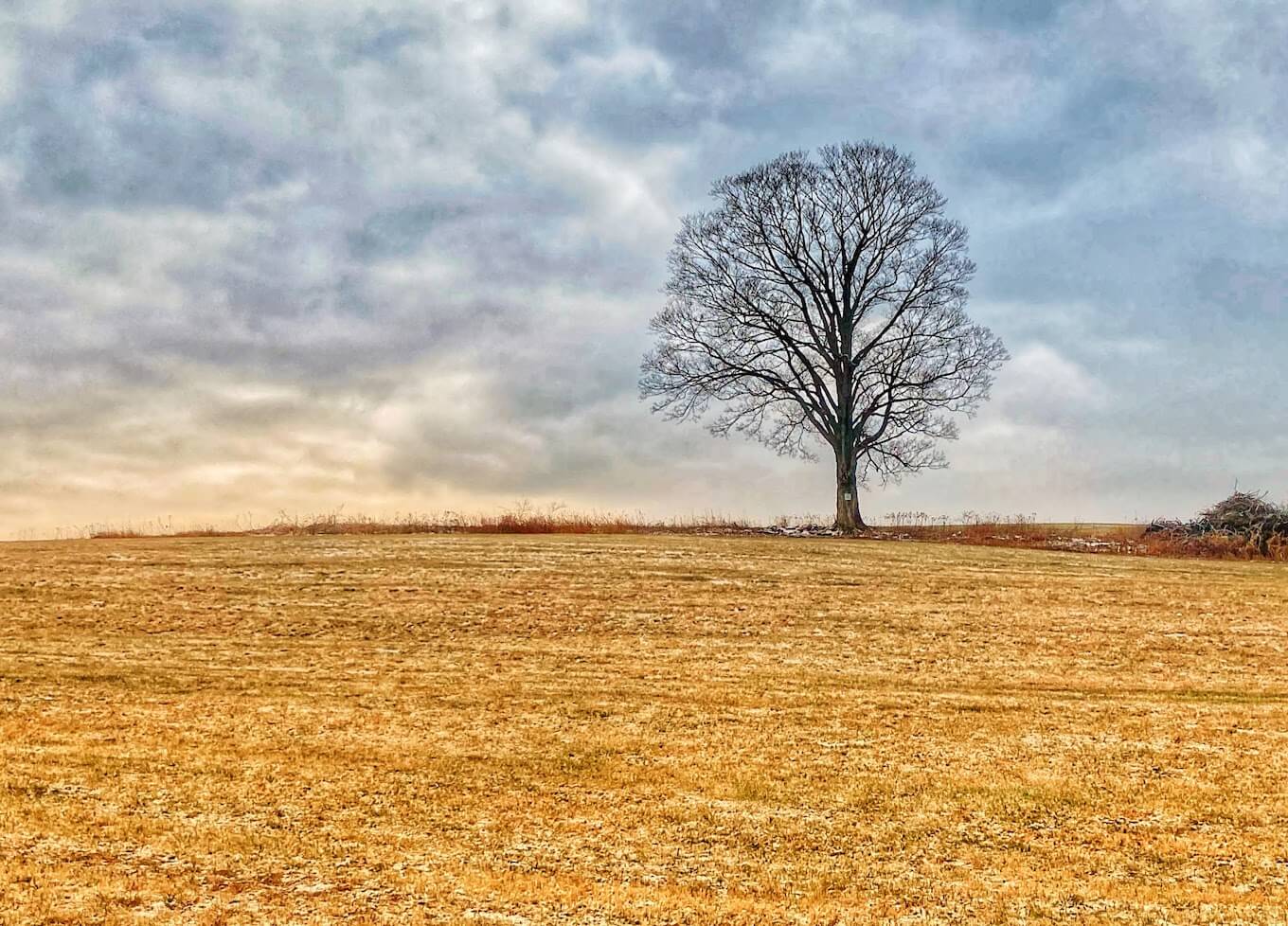The rule of thirds is probably the best-known photography rule, so it’s the perfect place to start if you’re trying to improve your photography. This elemental composition guideline can be used to create visual appeal and impact within your photos. It can be used in all types of photography, from landscapes to portraits, and can even be implemented during post-processing with creative cropping. Here’s what you need to know about the rule of thirds and how to use it in your iPhone photography.
What is the rule of thirds in photography?
The rule of thirds is a simple technique that involves positioning the most important features of your photo along imaginary grid lines that divide your image into thirds, both vertically and horizontally. This is a great composition tool because it creates negative space within your photo and adds a sense of asymmetrical balance. Like all photography composition rules, this one isn’t set in stone, but it’s a good starting point when framing your shot.
Why is it called the rule of thirds?
The name “rule of thirds” comes from the advice to divide your image into thirds using imaginary grid lines going both vertically and horizontally. The general guideline is to position your most interesting elements where the grids intersect.
What does the rule of thirds tell the viewer visually?
At its core, the rule of thirds grid is just an imaginary guideline for helping you place important features a bit off-center in your image. Doing this helps create balance within your photo, and it also keeps your viewer’s eye moving through the scene to hold their interest.
Does the rule of thirds apply to portraits?
Yes! The rule of thirds is actually quite useful for portrait photography. Because a subject’s eyes are often the main focal point of a portrait, photographers tend to center the subject’s face on the left or right vertical grid line, with the eyes positioned on the top horizontal grid line.
Something else to consider when positioning your subject within the frame is the direction they are looking. You want to give them more negative space in front of the direction of the eyes, ahead of your subject. This helps to bring the illusion of movement to your photo by directing the viewer toward what your subject is looking at, even if it is empty space.
Tips for using the rule of thirds when shooting on iPhone
Implementing the rule of thirds is easy once you start practicing. If you’re using your iPhone to take photos, here are a few tips for using the rule of thirds to create stunning photos.
1. Use the rule of thirds grid on iPhone Camera
Once you have the camera grid enabled on your iPhone, it will show up anytime you open your Camera app to take a photo. You won’t even notice it’s there — unless, of course, you’re practicing the rule of thirds! Here’s how to turn on the rule of thirds grid on your iPhone:
- Open the Settings app on your iPhone.
- Scroll down and tap Camera.
- Under Composition, toggle on the Grid option.
2. Crop your photo to the rule of thirds
Even if you’re just randomly snapping photos and not paying much attention to the “rules,” you can still implement the rule of thirds by cropping the image. Here’s how to crop your your iPhone photo into a rule of thirds composition:
- Open your photo in your Camera Roll and tap Edit.
- Tap the crop icon at the bottom of the screen.
- To retain your photo’s current dimensions, tap the rectangle in the top right and then choose Original.
- Drag the edges of your photo until you’re happy with the composition. Grid lines will appear to make this easier.
- Tap Done to save your photo.


How to improve your composition with the rule of thirds
Now that you’ve got some practical tips under your belt, here are a few ideas for implementing the rule of thirds for more creative compositions.
1. Leave negative space within your photo
Negative and positive space can work together creatively to add interest to your photo. Negative space isn’t empty space; it is the area surrounding the main subject of your photo. When using the rule of thirds, the use of a lot of negative space can be a powerful tool. Try utilizing a third of your image for your subject matter and two-thirds of your image for an abundance of negative space.

2. Use more than one point on your rule of thirds grid
The rule of thirds grid results in four intersecting grid lines, creating key areas for placing important elements of your photo. You don’t have to use them all, but it’s fun to play around with different compositions when out on a shoot so that you use several focal points in your image. But don’t forget that the intersecting grid lines are only suggestions for placement. The only true rule is to embrace the creative composition that works well for you.

3. Highlight the foreground, middle-ground, and background
You can highlight your main subject while creating interest in the rest of your scene by ensuring your photo has a distinct foreground, middle-ground, and background. In the photo below, for example, the sun is planted firmly in the upper-right, in accordance with the rule of thirds. The rest of the photo — grass, water, and sky — play minor supporting roles, but because they are positioned within the foreground, middle-ground, and background, they add depth and interest to the photo.

4. Pay attention to balance within your composition
Finding balance within a composition and translating it into a two-dimensional image takes practice. The rule of thirds is just the beginning, but it can be useful for helping to create a pleasing balance between elements.
Photos that use the rule of thirds can be symmetrical or asymmetrical and still create balance within your photo. Symmetrical compositions have equal weight on both sides, whether the shapes are literally symmetrical, like a mirror image, or figuratively symmetrical, with similar shapes and sizes, but not identical. Asymmetrical images utilize all the various elements of a composition to create balance, not just the shape and size of the main subjects.

5. Position the horizon line on one of the horizontal grid lines
This tip is primarily for landscape photos. When taking a photo that includes the horizon, you can add interest to the scene simply by placing the horizon line on one of the horizontal grid lines. If the sky is more interesting, place your horizon on the bottom grid line so that the sky takes up most of the scene; if the foreground is more interesting, place your horizon line on the top grid line so that the land or water takes up the majority of the image.
6. Align vertical elements along grid lines
When photographing subjects with strong vertical lines like buildings, people walking, or trees and flowers, place them on the vertical grid lines on either side of your photo. You can decide which grid line to use based on the direction the people are looking or walking. Even plants will appear to be “facing” one way or another, and you should leave more space in that direction.
The rule of thirds is one of the easiest rules to learn and follow in photography. It’s also a great rule to experiment with, so you know when it’s time to break it out.



